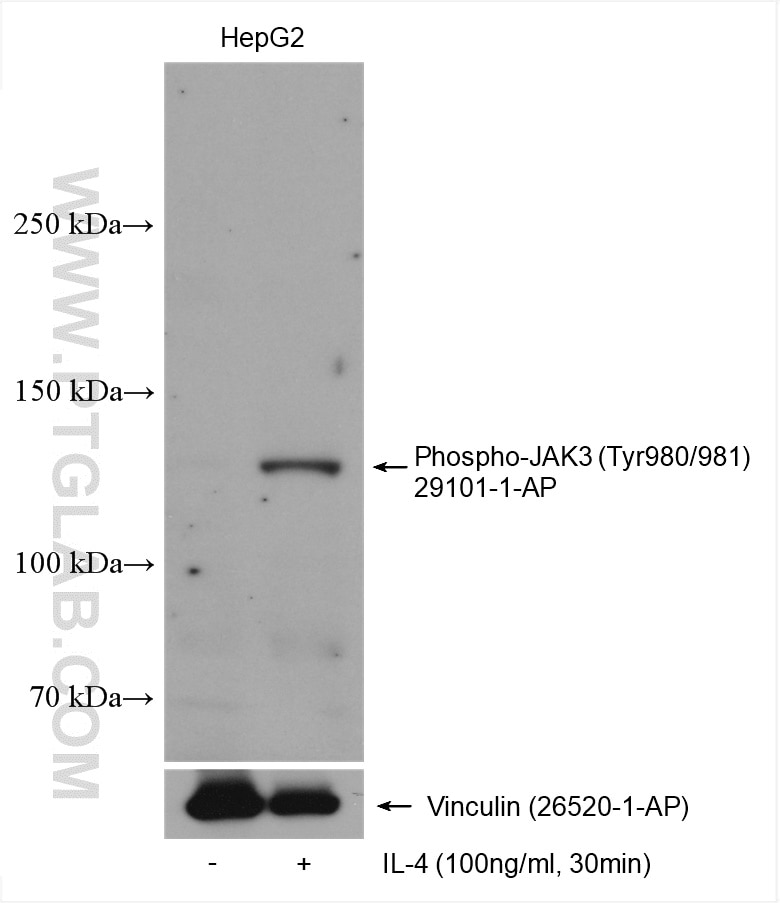Phospho-JAK3 (Tyr980/981) Polyclonal antibody, PBS Only
Phospho-JAK3 (Tyr980/981) Polyclonal Antibody for WB, Indirect ELISA
Host / Isotype
Rabbit / IgG
Reactivity
human
Applications
WB, Indirect ELISA
Conjugate
Unconjugated
Cat no : 29101-1-PBS
Synonyms
Validation Data Gallery
Tested Applications
Recommended dilution
| Application | Dilution |
|---|---|
| It is recommended that this reagent should be titrated in each testing system to obtain optimal results. | |
Product Information
29101-1-PBS targets Phospho-JAK3 (Tyr980/981) in WB, Indirect ELISA applications and shows reactivity with human samples.
| Tested Reactivity | human |
| Host / Isotype | Rabbit / IgG |
| Class | Polyclonal |
| Type | Antibody |
| Immunogen | Peptide 相同性解析による交差性が予測される生物種 |
| Full Name | Janus kinase 3 (a protein tyrosine kinase, leukocyte) |
| Calculated molecular weight | 1124 aa, 125 kDa |
| Observed molecular weight | 125 kDa |
| GenBank accession number | BC028068 |
| Gene symbol | JAK3 |
| Gene ID (NCBI) | 3718 |
| RRID | AB_2918234 |
| Conjugate | Unconjugated |
| Form | Liquid |
| Purification Method | Antigen affinity purification |
| Storage Buffer | PBS Only |
| Storage Conditions | Store at -80°C. |
Background Information
JAK3 belongs to the Janus kinase family of receptor-associated tyrosine kinases located in cytoplasm adjacent to the plasma membrane. Janus kinase family comprise four tyrosine (Tyr) kinases (JAK1, JAK2, JAK3 and Tyk2). In the cytoplasm, JAKs play a pivotal role in signal transduction via its association with type I and type II cytokine receptors, which include receptors for interleukins (ILs), interferons (IFNs), and hormones such as leptin. Interaction of a cytokine with its membrane-bound receptor complex triggers activation of receptor-bound JAKs, which phosphorylate the receptor on key cytoplasmic Tyr residues. These act as docking sites for SH2 domain-mediated interactions with STAT proteins. Receptor-bound STATs are then phosphorylated on conserved Tyr residues within their C terminal domains prior to dissociation from the receptor and formation of homo- or heterodimers. These translocate to the nucleus, bind target gene promoters, and stimulate target gene transcription. (PMID: 30948191)


